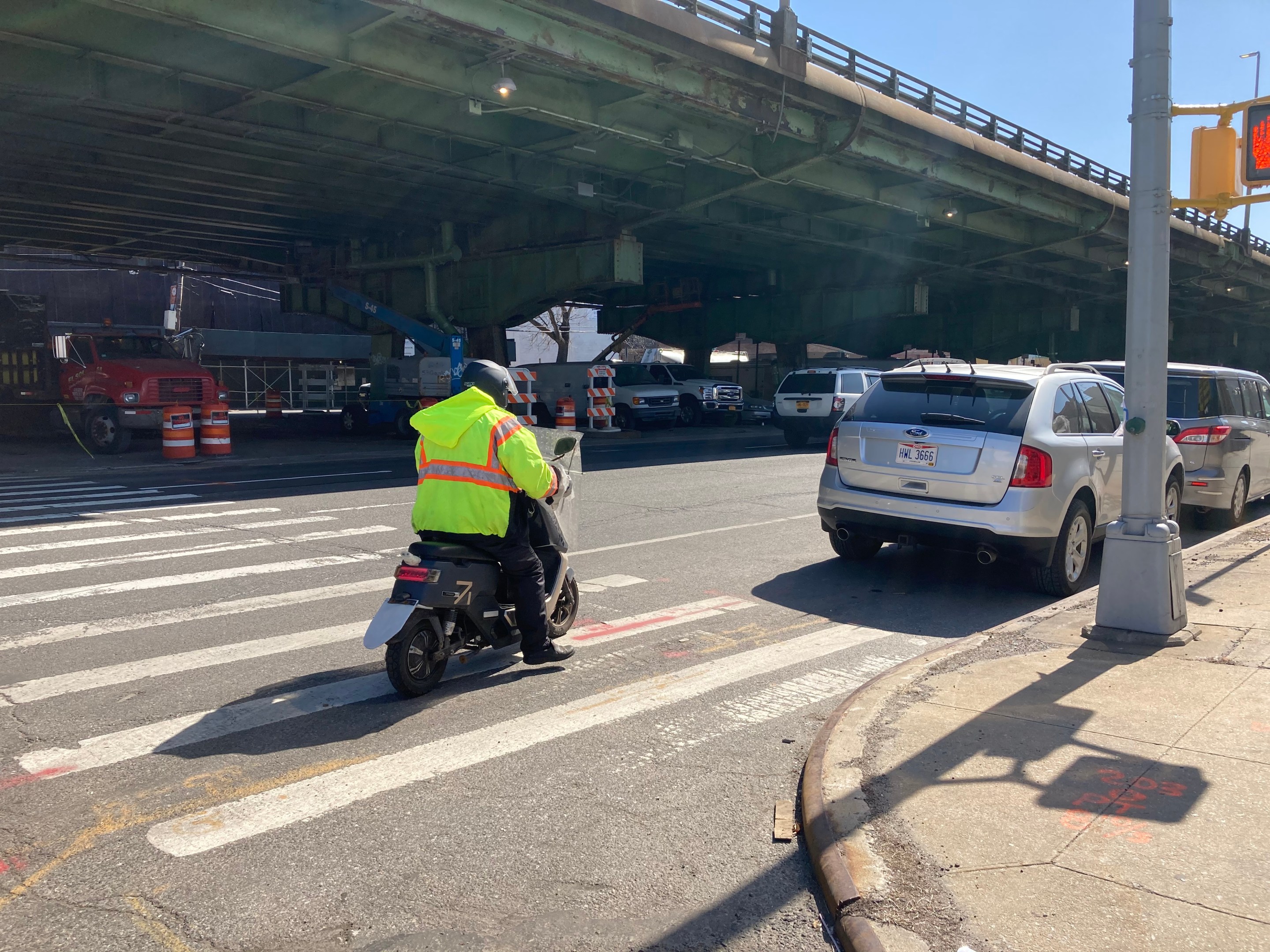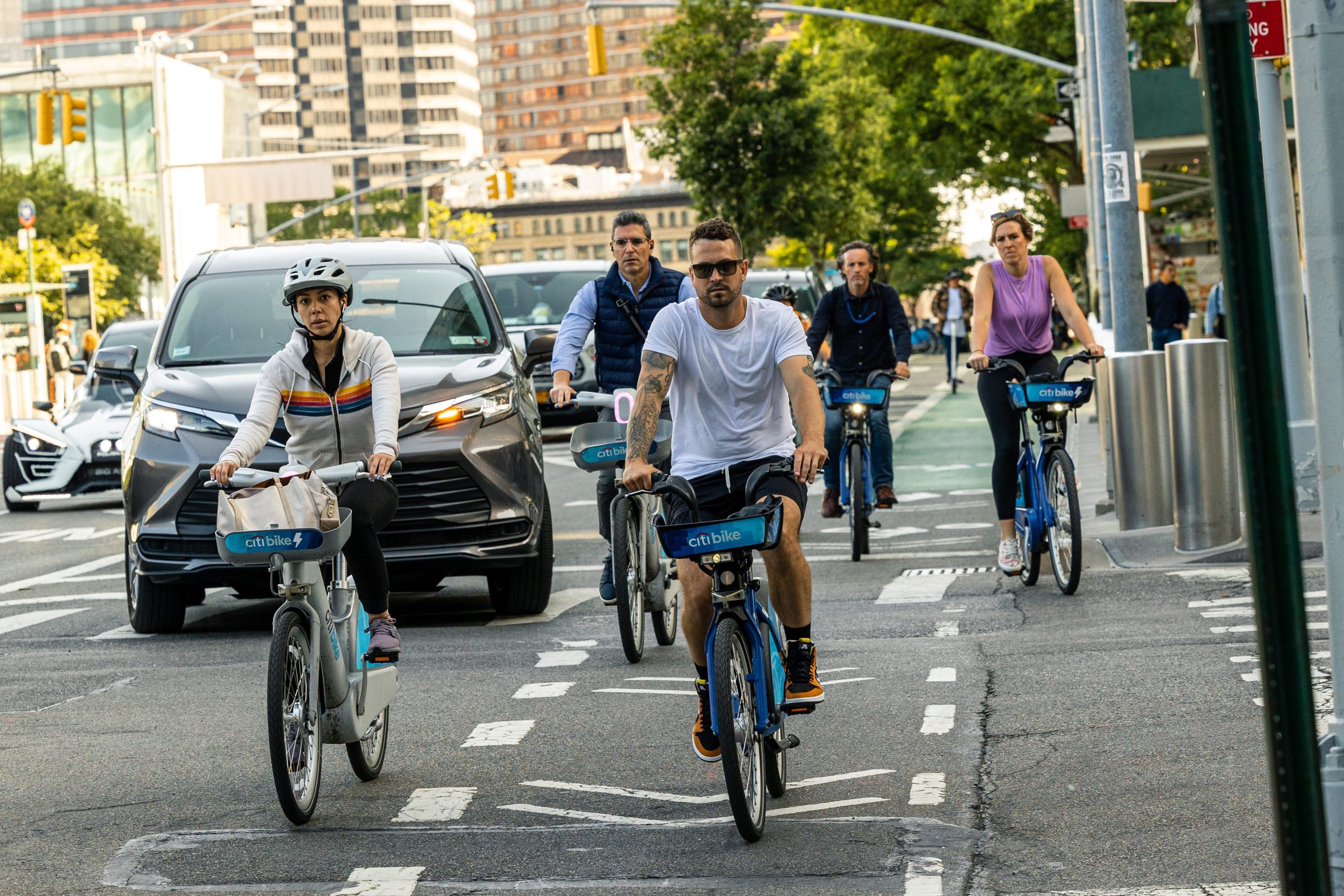A notoriously treacherous roadway in Sunset Park will get even worse, locals warn, thanks to an influx of trucks coming soon as part of the county’s largest distribution center slated for the neighborhood — one of more than a half-dozen trucking centers that are expected soon.
Developers Bridge Development Partners and DH Property Holdings are planning to erect the massive distribution facility on Third Avenue between 19th and 21st Streets some time this year. The four-story facility inside Sunset Industrial Park, detailed in The Brooklyn Paper, will occupy more than 22 football fields’ worth of space.
It’s unclear exactly what tenants will occupy the new facility, or how many additional trucks will be traversing Third Avenue, but locals and safe-street advocates fear that any increase in truck traffic will put even more lives in danger, especially on a thoroughfare where at least six people have been killed since 2019. (The developers did not respond to a request for comment.)
“We’ve been talking about Third Avenue and deaths there forever as a neighborhood. Black and Brown people are dying on Third Avenue,” said Sunset Park resident and transit advocate Jorge Muñiz-Reyes. "The only solution has been a few more lights and lowered speed limit, but it’s still dangerous. It’s a major disaster waiting to happen unless the city intervenes.”
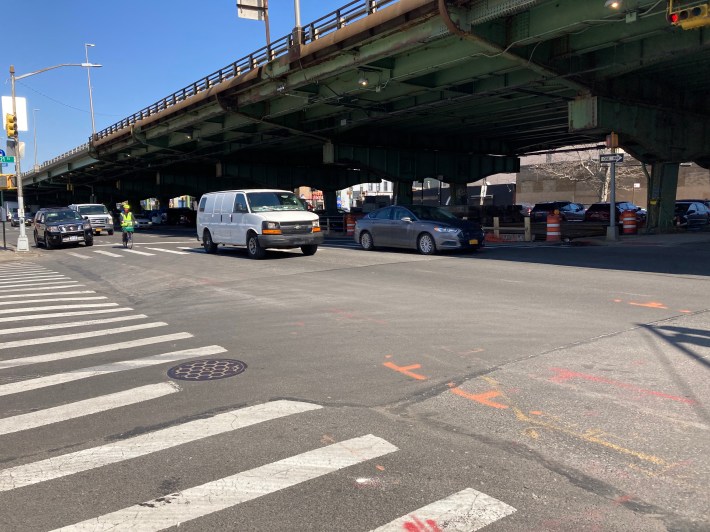
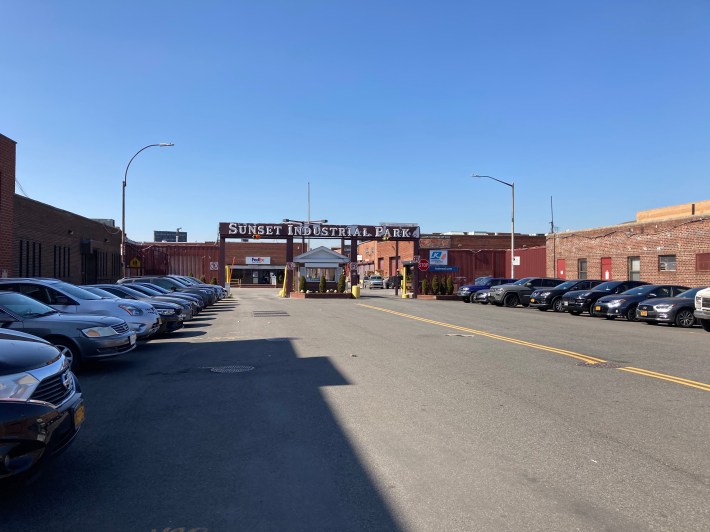
Third Avenue below the elevated Gowanus Expressway between 18th and 54th streets is an infamous death trap — it has three lanes of traffic heading north and another three heading southbound. South of 54th Street, the configuration is different: two lanes of traffic on a service road on each side of the expressway, and five high-speed lanes directly underneath the highway.
Drivers and truckers often avoid the gridlocked Gowanus by using Third Avenue, turning it into a dangerous speedway. And it’s even more perilous at night, when the avenue, which is riddled with potholes, double-parked cars, and car washes with vehicles jutting out, is enshrouded in darkness because of the expressway above it.
And in the same council district just north of Sunset Park, at least five other distribution centers are slated or are already in-the-works in Red Hook, including two that Amazon is building at 640 Columbia St. and 280 Richards St. — both of which are expected to open next year, according to an Amazon spokeswoman. (The spokeswoman declined to answer questions about truck traffic.)
Fears of what even more big rigs could mean for both neighborhoods already plagued with the pollution and traffic crashes caused by them has been an ongoing conversation for years. And since 2018, Sunset Parkers have been demanding the city study truck traffic patterns in the district and the effects of what more could bring, but the city has remained relatively silent.
“The community board has been requesting a trucking study from DOT for a while, there’s been no movement on it,” said local activist Whitney Hu. "The city itself has been fairly quiet on distribution centers popping up. It brings a lot of concerns to the community — street safety itself is extremely worrisome, we know more trucks and more cars without any proper studies is just exacerbating a lot of traffic issues already seen in Sunset Park."
The city has been largely silent because the proposed buildings don’t require a zoning change and therefore do not get the scrutiny, the community engagement or the environmental impact study required under the city's Uniform Land Use Review Procedure.
“(The) distribution centers proposed in the community are as-of-right developments, so they don’t require special permits. DOT’s mission is to keep people, goods, and traffic moving safely, and we’re well aware of the e-commerce boom’s impact on that mission,” said a DOT spokesperson.
But because of that, the area is ripe for such massive warehouses like the in-the-works distribution centers since much of it is already zoned as industrial, often leaving surrounding roads dangerously uneven, thanks in part to all the truck traffic. The local council member, Carlos Menchaca, has frequently opposed residential rezoning, choosing the devil of truck traffic over the possibility that market-rate housing will lead to gentrification.
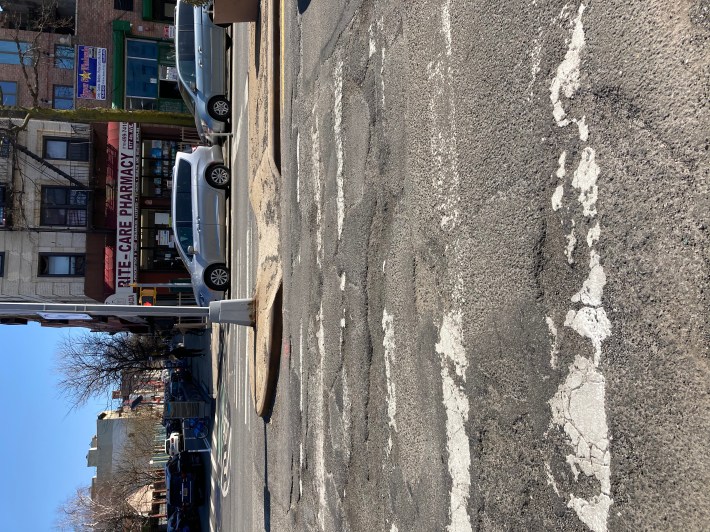
DOT didn’t respond directly to questions about the study locals have been asking for, but said the agency will be “releasing new initiatives on truck management soon,” and instead touted the Commercial Cargo Bike program it launched back in 2019 that’s so far only in Manhattan. A spokeswoman also said DOT has been providing "periodic updates to CB7 over the last few years" about the 20th Street study.
But due to COVID-19, DOT says that some work was delayed and it plans to present to the civic panel in the coming months.
Without a study now, the chairman of Brooklyn’s Community Board 7, which includes portions Third Avenue, told Streetsblog that the civic panel is creating its own ad hoc committee to solely focus on the planned distribution center since the city has remained mum on the issue.
“We haven't had any real conversations or coordination with the city on any of this, or any of the actors that are supposedly coming into the district,” said César Zuñiga, who is also running for the council seat being vacated by the term-limited Carlos Menchaca.
The incoming chair of that committee, which is expected to meet for the first time in April, says it will focus on the increased challenges expected as a result of the distribution centers, like traffic and poor air quality, especially since Sunset Park and Red Hook have some of the highest rates of asthma in the city.
"We'll be tackling the larger impacts of these last mile trucking facilities, impacts on the community and neighborhood as it relates to infrastructure, transportation, and pedestrian and bicycle safety, and again as it relates to air quality," said Katherine Walsh, who also represents both neighborhoods as the county committee chair for Assembly District 51.
And one City Council candidate for District 38, which includes both Red Hook and Sunset Park, said neither community has been properly informed about what’s coming — a fault, he says, of the land-use process that allows the developers to build the distribution centers without having to go through ULURP.
“This community has not been engaged adequately by the developers. Few people know that’s coming or realize the impact traffic, congestion, air quality, and bike and pedestrian safety. There are a number of concerns that I think need to be addressed,” said Rodrigo Camarena. “But the city also holds responsibility in how it will regulate these massive distribution centers. It’s a big structural challenge that these developers can just transition warehouses into distribution centers as-of-right without going through the ULURP process.”
And while Amazon may not be building its own brick-and-mortar facilities in Sunset Park, yet, the Seattle-based e-commerce company has already been quietly opening up smaller distribution centers in the community in Industry City, in addition to in Red Hook, according to Hu, who said they've already made the neighborhood's congestion problem even worse.
“Amazon continues to grow in size and scale, I understand COVID exacerbated peoples online tendencies. They’re continually just popping up. It’s already creating a lot of traffic tension in those areas, a lot of cars are double parked,” she said.
Last October, members of the community gathered in the community for a vigil for 31-year-old Clara Kang, who was killed near 55th Street on Oct. 3 by a motorcyclist after finishing her nursing shift at NYU Langone Hospital–Brooklyn.
At the time, many locals asked different versions of the same question: “How many more people have to die before action is taken on Third Avenue?”
We’re outside NYU Langone in Sunset Park to remember Clara Kang, a nurse killed on Third Avenue while riding her bike home from her shift last week. pic.twitter.com/EuggWaRFma
— Transportation Alternatives *Vote on Sammy's Law* (@TransAlt) October 6, 2020
But just two months after that, another cyclist died on the same avenue about 30 blocks away. Police had said 33-year-old Alejandro Santos “collided” with the back of a parked and unoccupied 2019 flatbed truck near 24th Street — right in front of a car dealership — just a little after midnight on Christmas morning. Police could not say whether the truck was illegally parked at the time of the fatal crash. And in 2019, four people were killed along Third Avenue, with dozens more injured.
It wasn’t until recently that the city finally broke ground on a 15-year-old plan to protect cyclists and pedestrians along a portion of Third Avenue. Way back in 2005, the federal government allocated $14.6 million to build the Brooklyn Waterfront Greenway, but 15 years later, large swaths of the safe route have yet to be built, and the protected pathway planned for the upper part of Third Avenue in Sunset Park stops short of the roadway’s more deadly sections, leaving pedestrians and cyclists, especially delivery workers, as vulnerable as ever.
